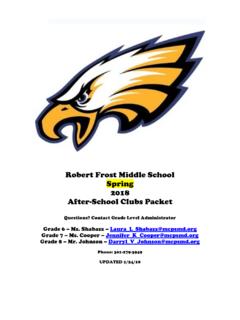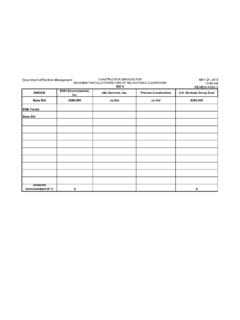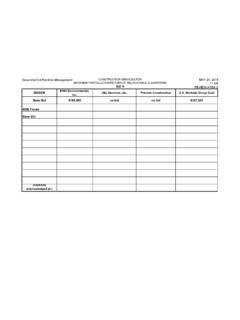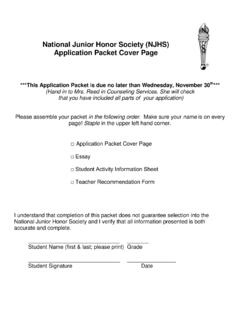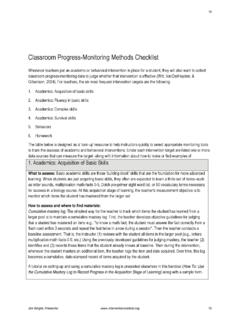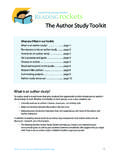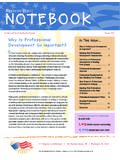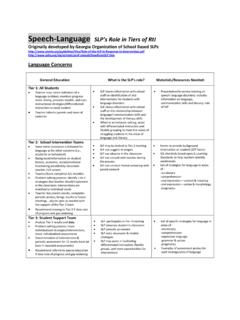Transcription of GT/SLD Pattern of Strengths and Weaknesses
1 TWICE EXCEPTIONAL STUDENTS: A Staff Guidebook | 45GT/SLD Pattern of Strengths and WeaknessesPURPOSE: This tool was developed to support schools as they discuss concerns related to bright students. It is designed to assist teams to determine whether or not a student may be suspected GT with a Specific Learning Disability (SLD). It may help teams to discuss whether a referral for GT/LD services may be appropriate. Student s Name: _____ ID Number: _____Grade:_____School: _____ School Contact Person: _____DIRECTIONS: As a team, identify Strengths and needs. 1) First, check for Strengths . Place a check mark in any box in the Strengths column where the area is a significant strength compared with the student s grade-level peers. 2) Second, check for needs. Place a check mark in any box in the needs column where the student s performance is significantly below expectancy given the student s Strengths or if the student performs below grade level in that area.
2 If there are many areas checked on both sides of the chart, the child may have a Pattern of Strengths and Weaknesses consistent with that of identified GT/SLD students. COGNITIVES trengthsNeedsComments/Noteso Verbal reasoningo Visual spatial reasoning o Problem solving o Background knowledge and vocabularyo Making connections between events, ideas, and situations o Concept attainment and retention o Long-term, abstract memory o Critical thinking (analysis, synthesis, evaluation)o Creativity and imagination, generation of new or original ideas o Curiosity, questioningo Processing speed o Memory (rote or short-term)o Executive functioning/mental organization o Working memory o Auditory processingo Visual-spatial perception o Sequential processing o Visual-motor integration o Distractible or hyperactiveVerbal reasoning is a common characteristic of a GT/SLD student.
3 Generally, GT/SLD students are driven to learn about key areas of interest. While they may have difficulty organizing their thinking, they tend to be able to make good connections and have strong problem-solving capabilities. If Weaknesses in rote memory and organization are compensated for, these Strengths generally | MONTGOMERY COUNTY PUBLIC SCHOOLSWRITTEN EXPRESSIONS trengthsNeedsComments/Notes o Creative ideas, originality o May have a strong voice o Word choice, vocabulary o Grasp of concepts, ideas o Background knowledge, information o Translating ideas on to paper o Difficulty getting started o Organization/sequencing of ideas o Elaboration, providing adequate support/detail (minimal output) o Conventions/mechanics o Spelling o Poor handwriting o Slow writing speed/fluency o Minimal productionMany times, Strengths noted above are only evident verbally through their oral expression (until they learn compensatory strategies) as, most often, their Weaknesses impact their ability to get their thoughts out on paper.
4 When the students read back or discuss their writing, they may verbally elaborate and add unlimited description and detail. Some students have great difficulty with the mechanics of writing but can put their thoughts on paper. Others have more difficulty figuring out how to filter through all their ideas and narrowing their focus. Others have difficulty generating/organizing ideas and getting started. Some students have all of these challenges. READINGS trengthsNeedsComments/Notes o Listening comprehension (deeper meaning, making connections, inferential thinking, insights) o Using high-level vocabulary and sharing vast background knowledge o Applying shared inquiry (high-level discussion and questioning) o Grasping themes and getting the main idea o Phonemic awareness and decoding (phonics) o Oral reading fluency (pace and smoothness) o Memory, recalling accurate/adequate details o Written responsesMost GT/SLD students have excellent reading-comprehension skills.
5 However, if reading is impacted, the most common areas of need are in decoding and fluency. Students with limited decoding skills often have short-term memory and sequencing difficulties. These Weaknesses can impact a student s comprehension of independently read text. If the written component is removed from the comprehension task, often the GT/SLD responses are advanced for his/her oStrong grasp of concepts oReasoning, problem solving o Thinking logically and symbolically at high levels o Coming up with new or alternative solutions to problems o Relating math concepts to novel situations o Computation (particularly long division, multi-digit multiplication, working with fractions) o Retaining and recalling math facts automatically and quickly o Processing information sequentially (following algorithms, showing your work, explaining how you got your answer)Many GT/SLD students are strong mathematical thinkers and grasp taught concepts quickly.
6 Typical areas of weakness include calculations, basic facts, and showing work. In contrast, the GT/SLD student may be very strong in verbal skills, but have a clear weakness for number sense and visual spatial skills. This student finds math challenging, while having a stronger set of reading EXCEPTIONAL STUDENTS: A Staff Guidebook | 47 EXPRESSIVE LANGUAGES trengthsNeedsComments/Notes o Creative and unique ideas o Verbally fluent o Vocabulary o Articulate, adult-like discussions o Word retrieval o Organization and sequencing of ideas o Staying on topic o Pragmatic languageMost GT/SLD students have excellent expressive language skills and are described as highly verbal and articulate. Some students may have difficulties with word retrieval and will talk around an idea. Some students may know what they want to say but start and stop or sequence their ideas inappropriately.
7 RECEPTIVE LANGUAGES trengthsNeedsComments/Notes o Learning through listening o Understanding spoken language o Following directions o Identifying salient pointsMost GT/SLD students have strong receptive language ability and learn well by listening to the teachers and others. However, they often have difficulty following directions that are presented orally or identifying what is important. Attention difficulties may impact a student s listening comprehension, despite strong receptive language ability. SOCIAL EMOTIONALCHARACTERISTICSC omments/Notes o Low self-esteem related to school competence o Anxious about school performance o Task avoidant (limited to areas of difficulty)While social emotional difficulty is not a primary characteristic of a learning disability, many GT/SLD students (whose Strengths and needs are not recognized or addressed) may struggle with poor self-esteem, anxiety about school-related tasks, and frustration.
8 They may avoid tasks that they are incapable of doing well (reading, writing) but remain engaged during instruction that is strength -based (discussion, hands-on). Pervasive behavioral or emotional issues are not typical for GT/SLD students, and will often dissipate when/if the disability and the gifts are recognized and addressed. Findings: o The child has a Pattern of Strengths and Weaknesses that is strongly consistent with that of a GT/SLD student. o The child has a Pattern of Strengths and Weaknesses that is somewhat consistent with that of a GT/SLD student. o The child has a Pattern of Strengths and Weaknesses that is not consistent with that of a GT/SLD student.
